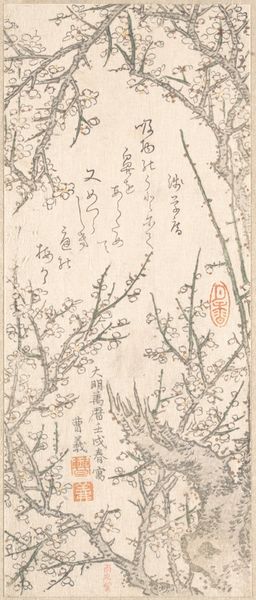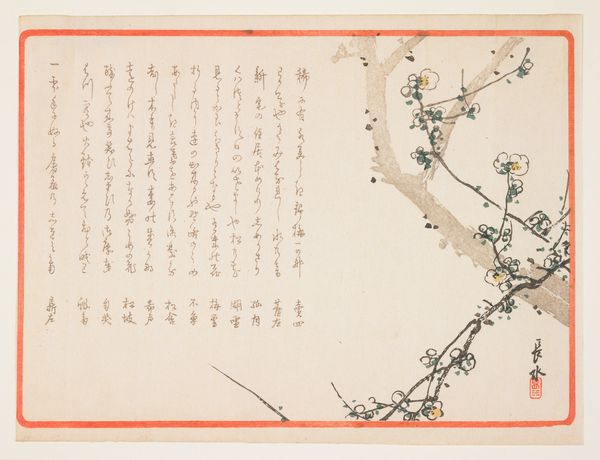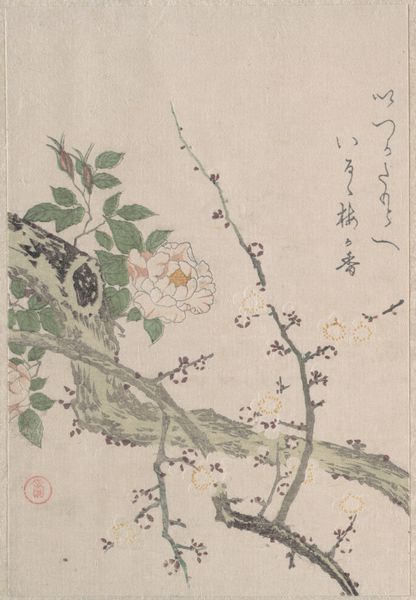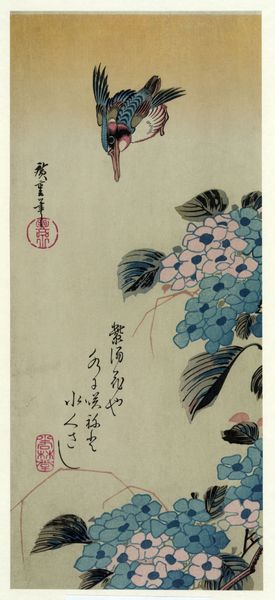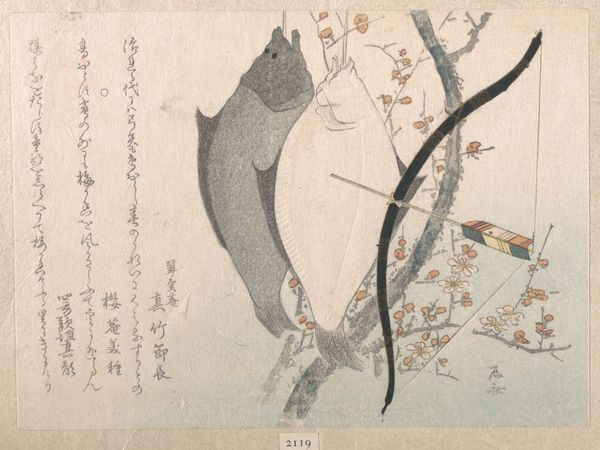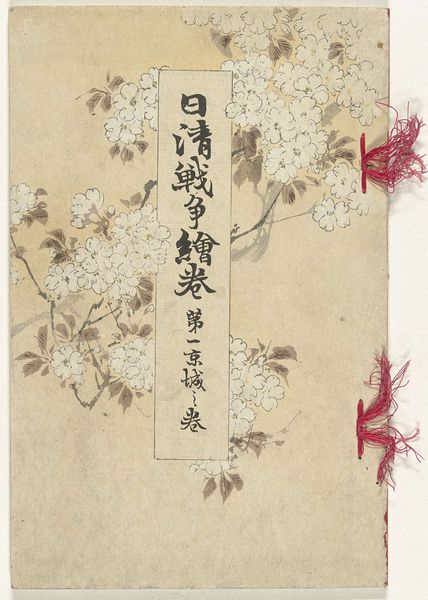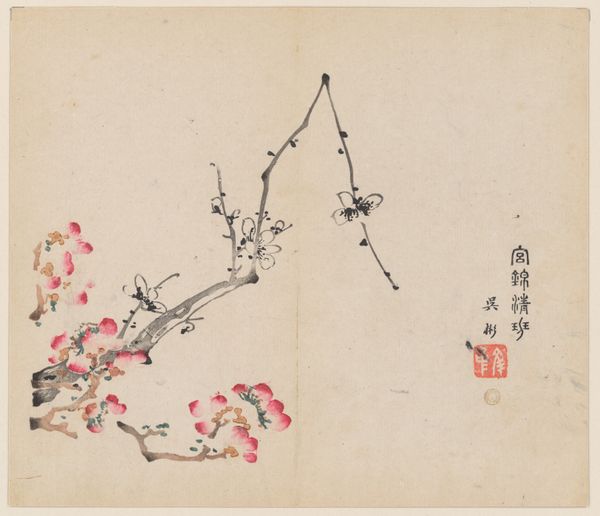
print, etching, woodblock-print, woodcut
#
tree
# print
#
etching
#
asian-art
#
landscape
#
flower
#
etching
#
ukiyo-e
#
woodblock-print
#
woodcut
#
orientalism
#
line
Dimensions: 8 5/16 x 3 5/16 in. (21.1 x 8.4 cm)
Copyright: Public Domain
Editor: This delicate woodblock print, "Plum Tree in Blossom" by Kitao Shigemasa, dated 1813, strikes me with its incredible detail. The blossoms seem so fragile. What stands out to you when you look at this piece? Curator: Well, considering the context, the actual *making* of this print is quite telling. It’s not just about Shigemasa's artistic vision; think of the collaborative labor involved in creating ukiyo-e. The woodblock carvers, the printers – their skill and labor are integral to the final artwork, not simply conduits for the artist’s idea. The use of wood as a matrix is an interesting choice because wood, like the trees depicted, bears seasonal transformation in its structure. Editor: That’s interesting. So, you’re saying the *process* gives the artwork meaning, beyond the image itself? How does that challenge traditional ideas about art? Curator: Precisely. Traditional art history often focuses on the genius of the artist. Here, we consider the materiality and the modes of production. Woodblock printing was also relatively accessible. Prints like these were commodities, reaching a wider audience than perhaps a painting might. What do you think of this print in relation to contemporary mass production of images? Editor: I never considered that the *print* makes it a product of labor, like, the material is part of the story. Thinking about it today, it makes me realize this piece blurs the lines between "high art" and commercial objects. Thank you, that was so illuminating! Curator: Indeed, seeing the work this way opens it up to broader discussions about art, labor, and accessibility that extend into our own time.
Comments
No comments
Be the first to comment and join the conversation on the ultimate creative platform.
